So this is where Blondel the minstrel, the Justin Bieber of the 12th century, aired his tonsils and found imprisoned King Richard the Lionheart, who responded to his crooning by bleating out the second verse, so the legend goes.
The ruins of Dürnstein Castle lord it above the little village of the same name amid half a dozen forested needle-like crags, where the Danube bends its leafy course through Austria’s Wachau Valley between the rolling folds of steep hills and vineyards, all the more beautiful for the autumn hues of every shade of yellow and copper.
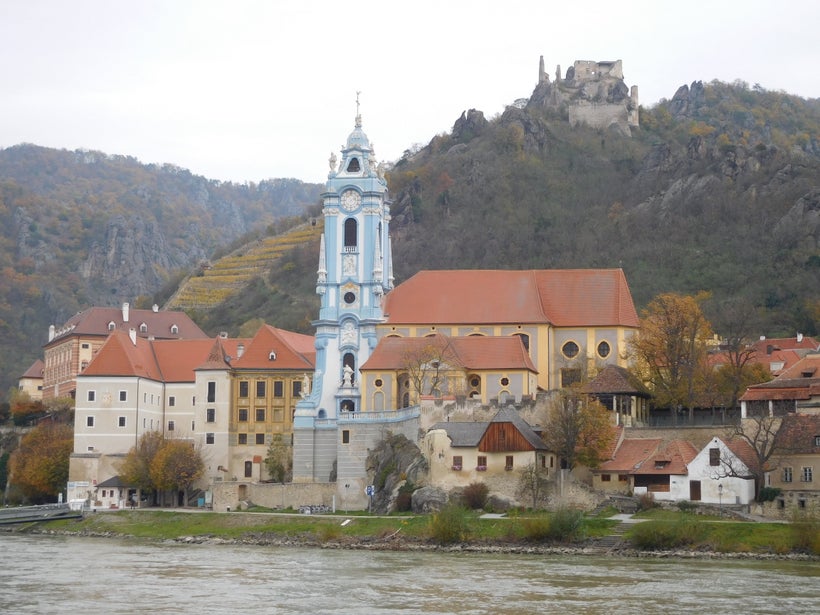
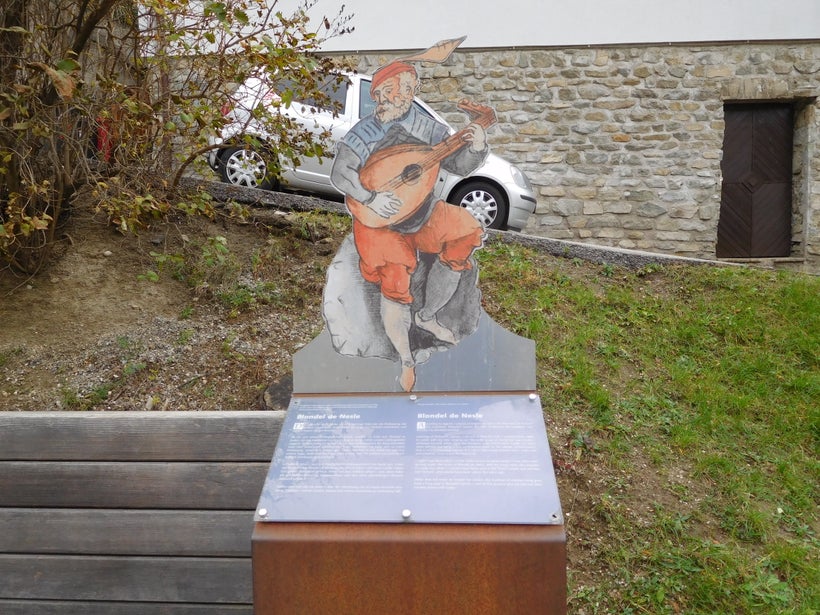
Dick fell out with Duke Leopold of Austria on the third crusade by hauling down Austria’s flag at the battle of Acre, decreeing that a mere duke should not have his rag fluttering among the banners of real kings.
So Leo took Dick prisoner on his way back to Old Blighty, holding him in the castle now above us. According to the legend, nobody knew where Lionheart was, so Blondel went from hilltop castle to hilltop castle, singing his signature tune to see if somebody within, presumably Dick, would respond with the second verse. At Dürnstein he got a positive.

So much for the legend, because it seems it was already well known where Dick was being held. Leo handed Dick over to the crusades’ C-in-C, Holy Roman Emperor Henry VI, and he was eventually released for a king’s ransom of thirty-five thousand kilos of silver, raised by melting down church spires and raising taxes in Old Blighty. It never changes, does it, at least for the second part.

Dürnstein Castle was razed more than two centuries later during the Thirty Years War. You can clamber above the village with its ornate blue and white church steeple to the ruins along a historical trail, with cut-out images of the various personages involved in the Lionheart tale, captioned with a little spiel on each’s role.
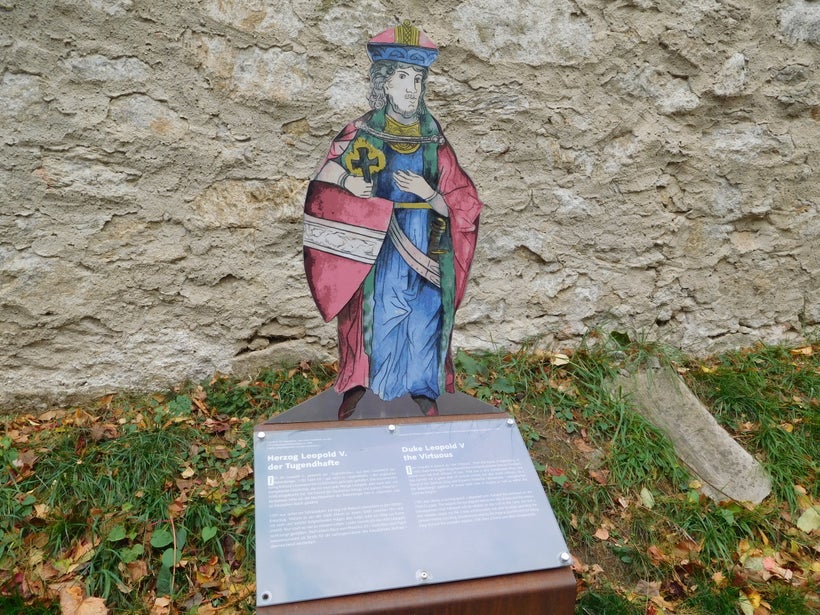
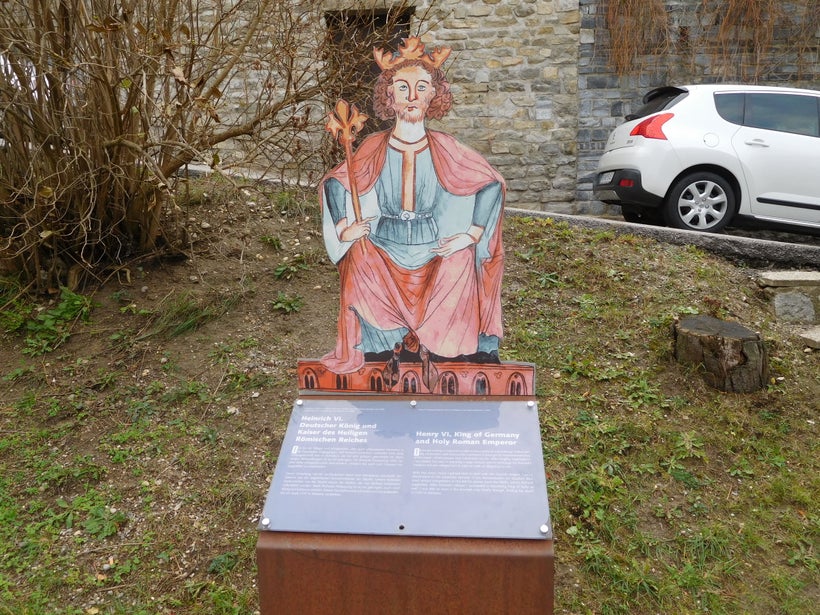
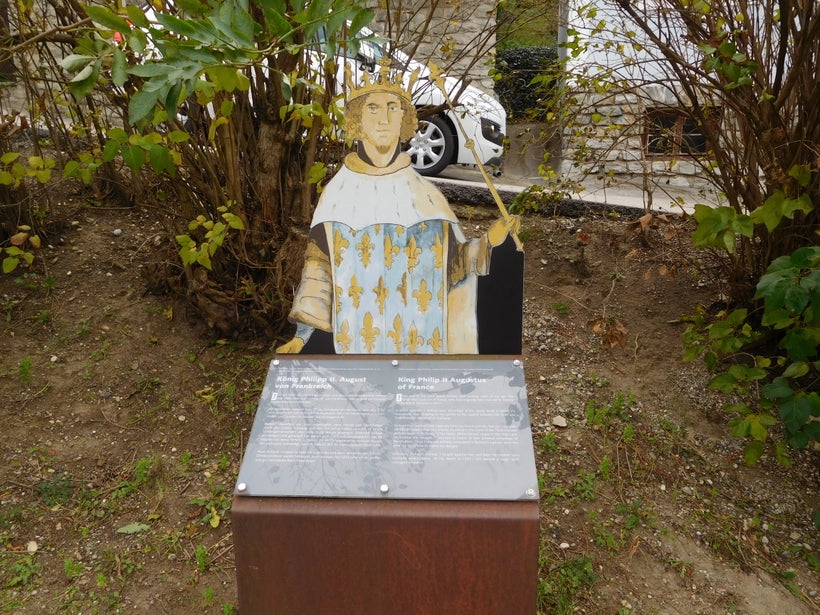
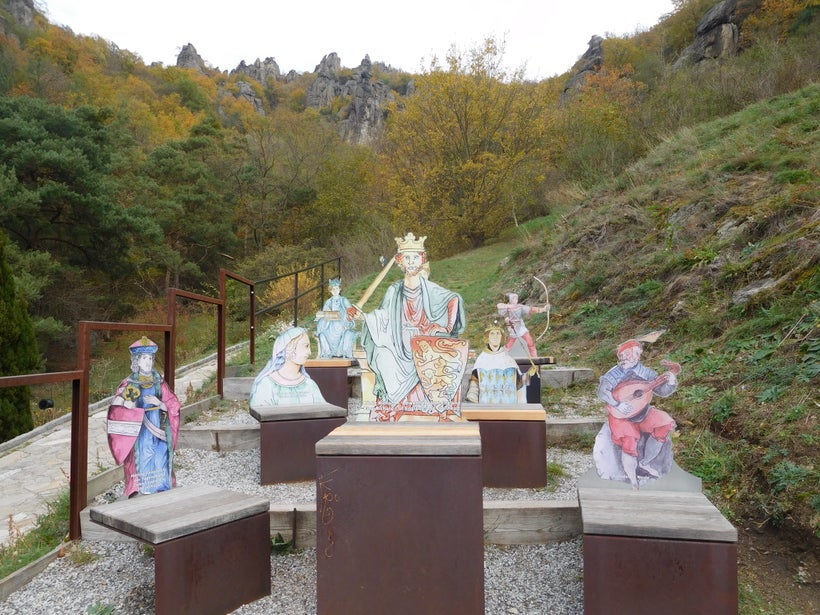
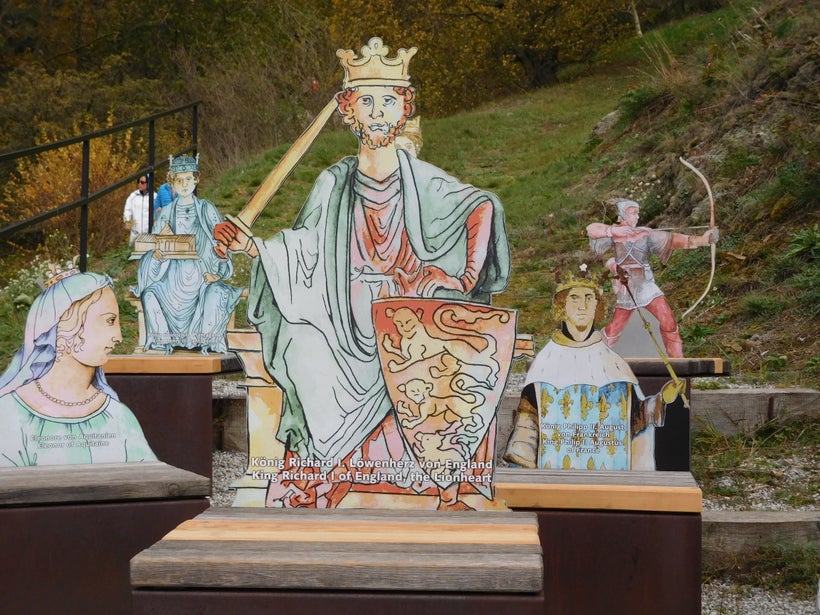
Rivka has found a little souvenir shop along the narrow village street where she proceeds to shed more than a hundred euros.
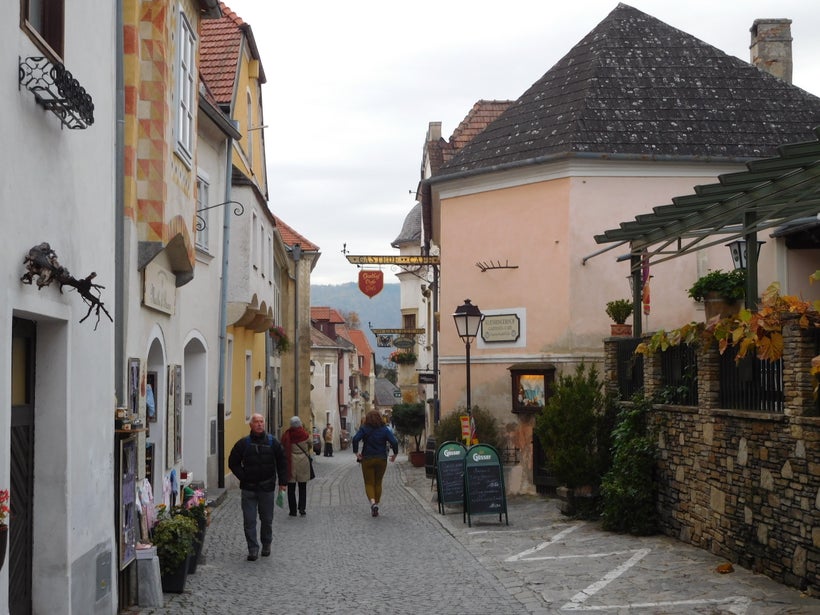
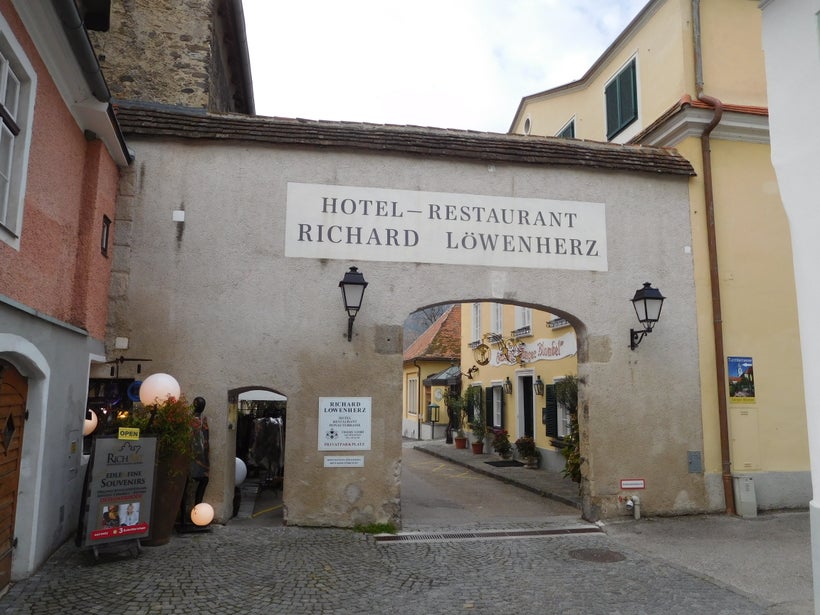
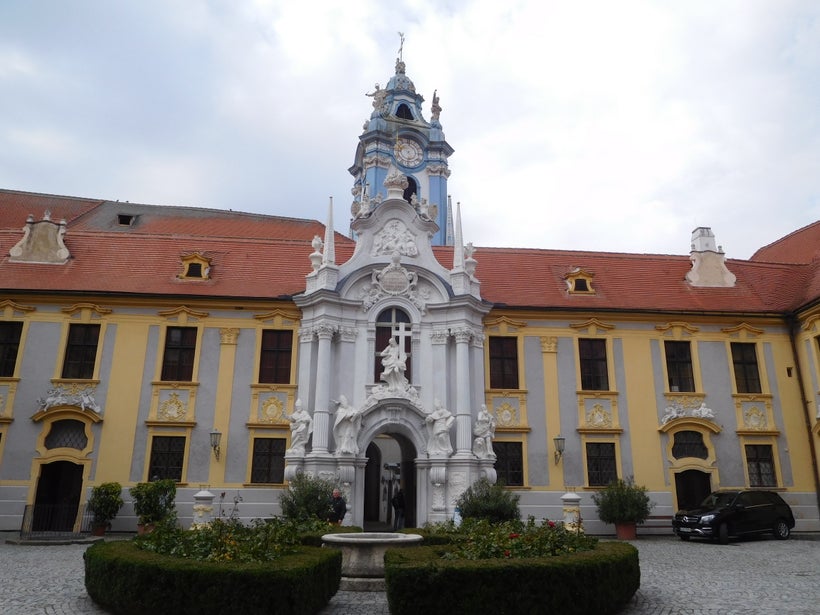
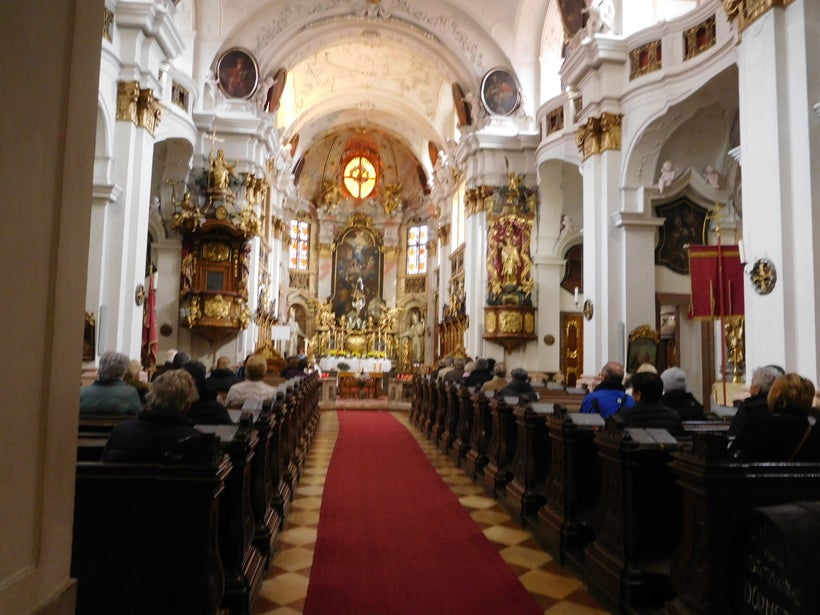
Meanwhile Yours Truly prowls a little further afield, clambering up a couple of hills for some prime photographic vantage points.
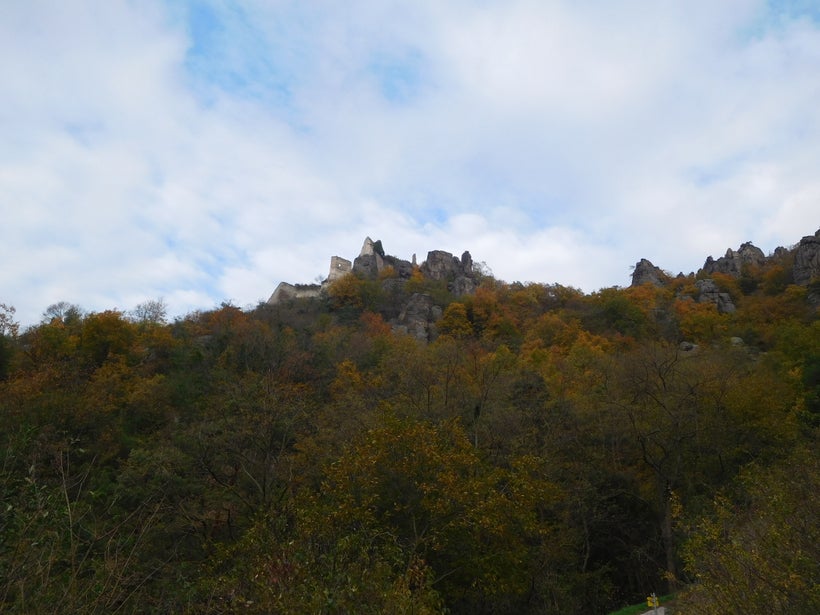
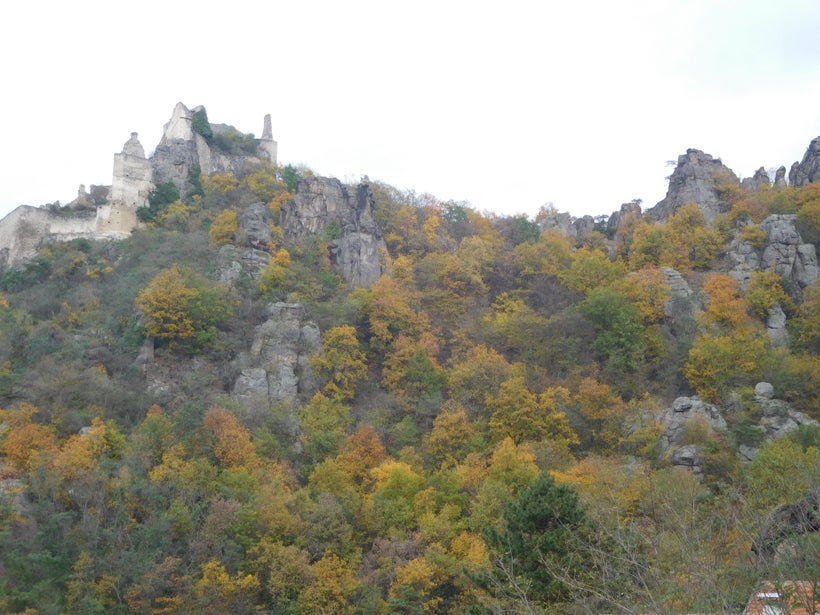

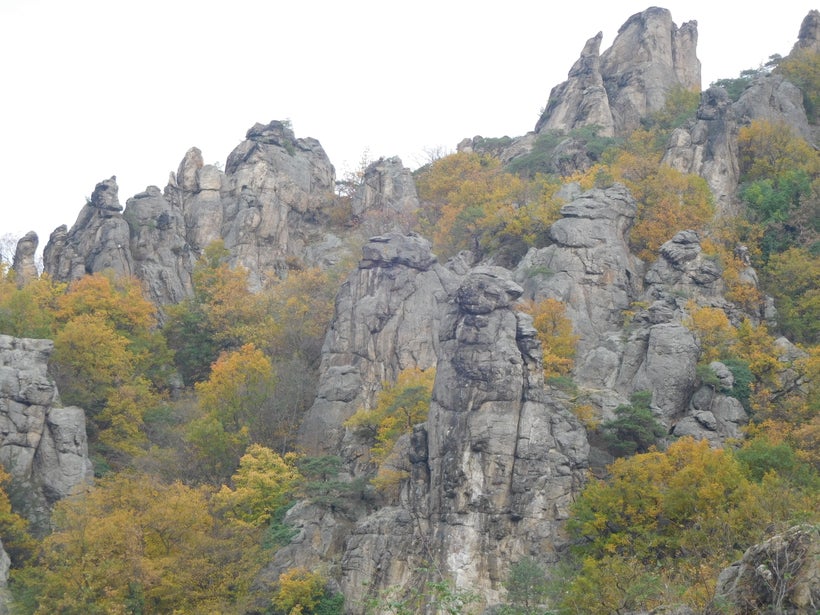
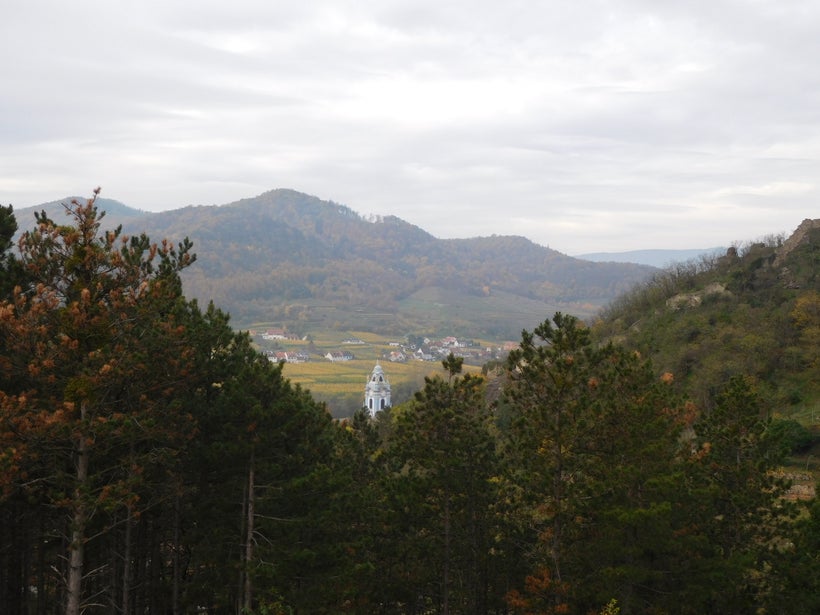

As we sail further up the valley, lovely autumnal vistas roll past with more villages, churches and ruined hilltop castles.
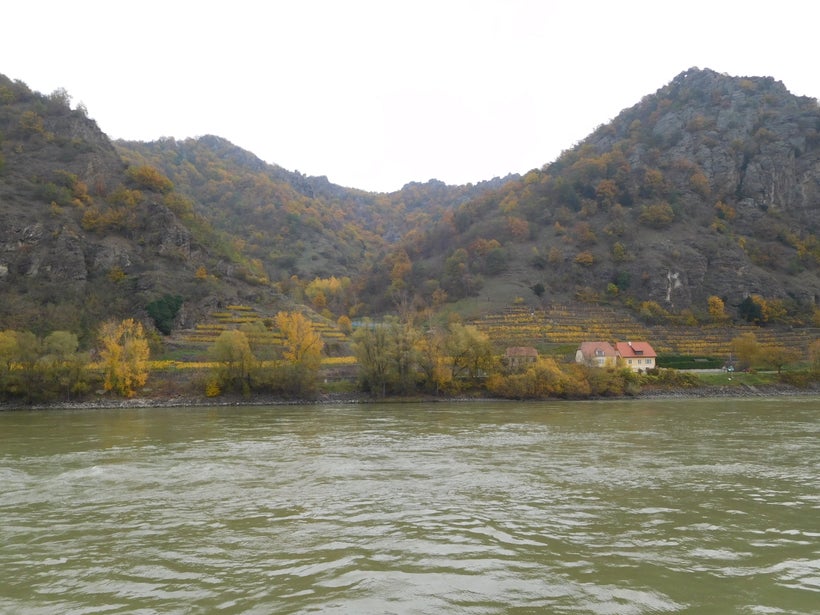
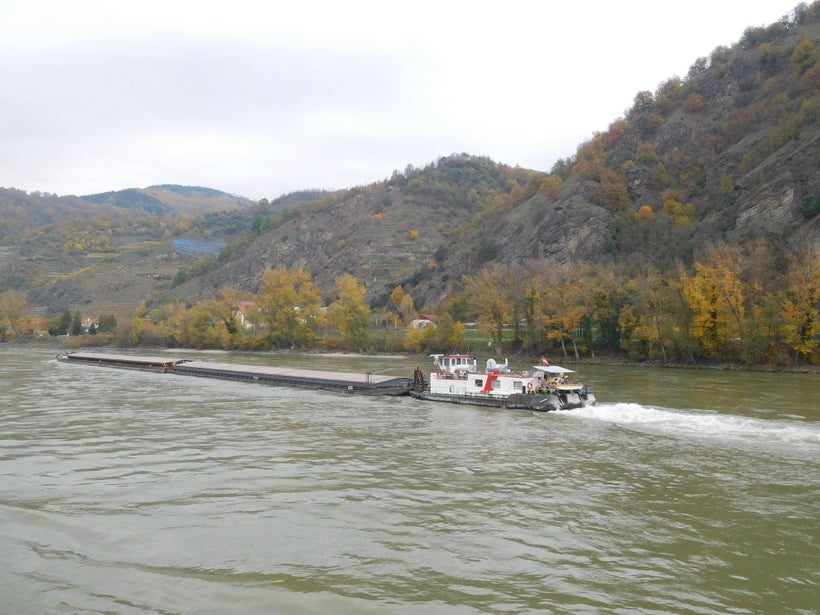
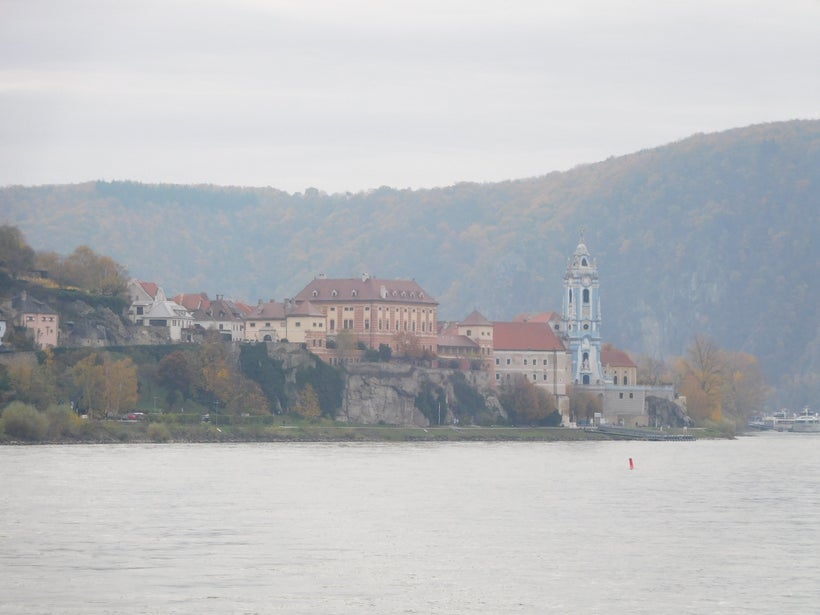
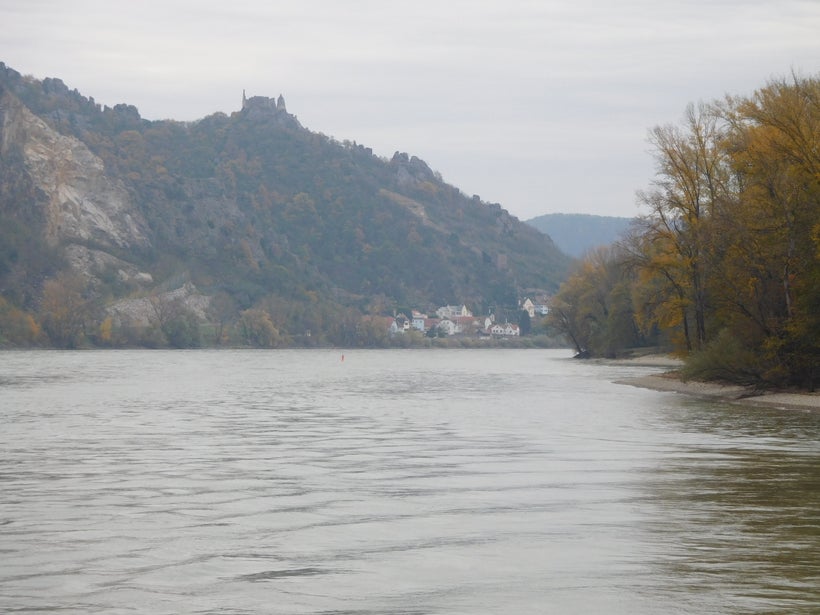
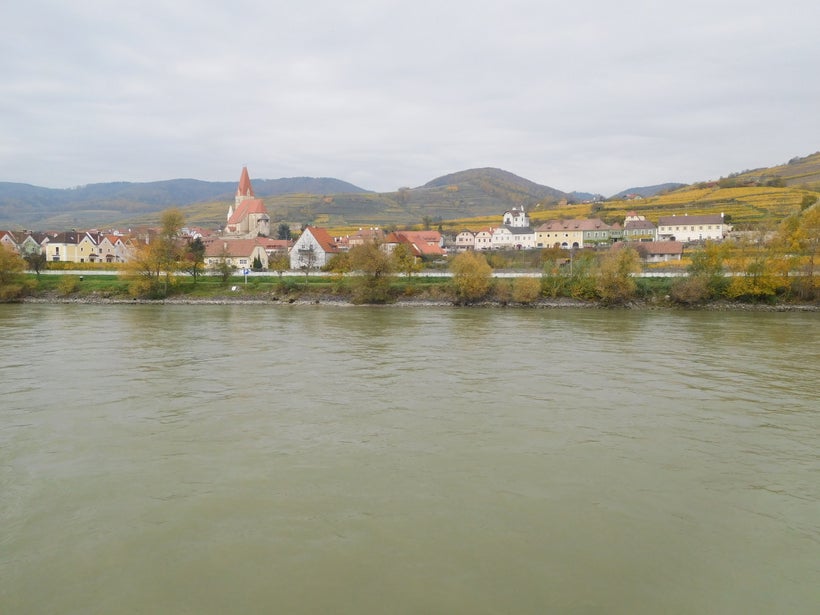
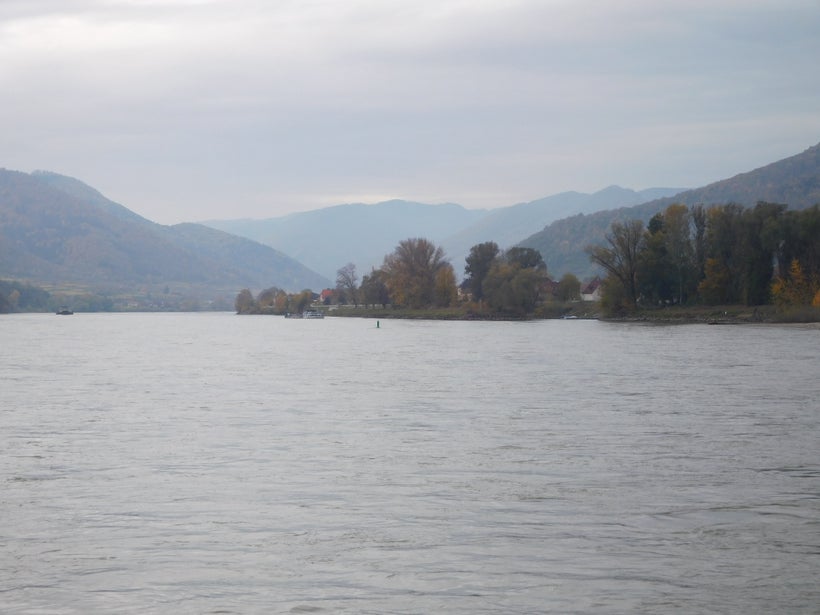
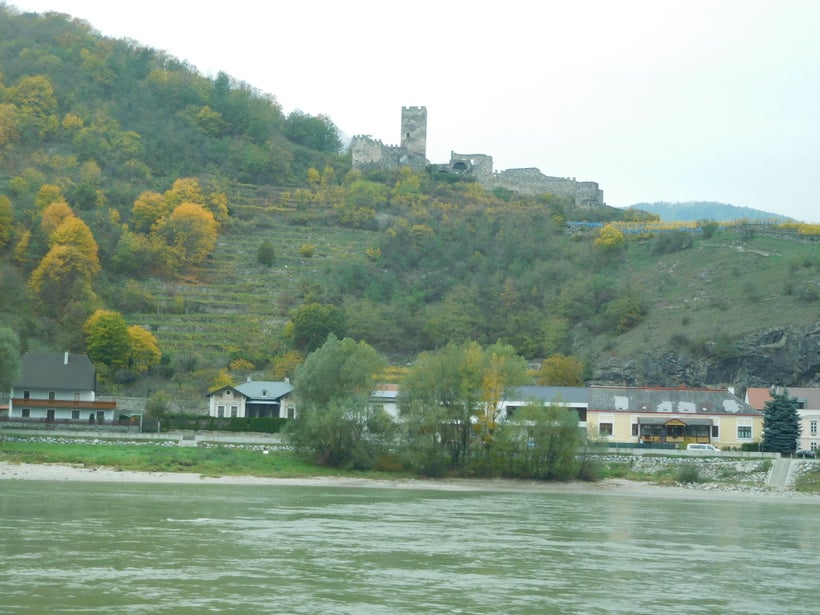
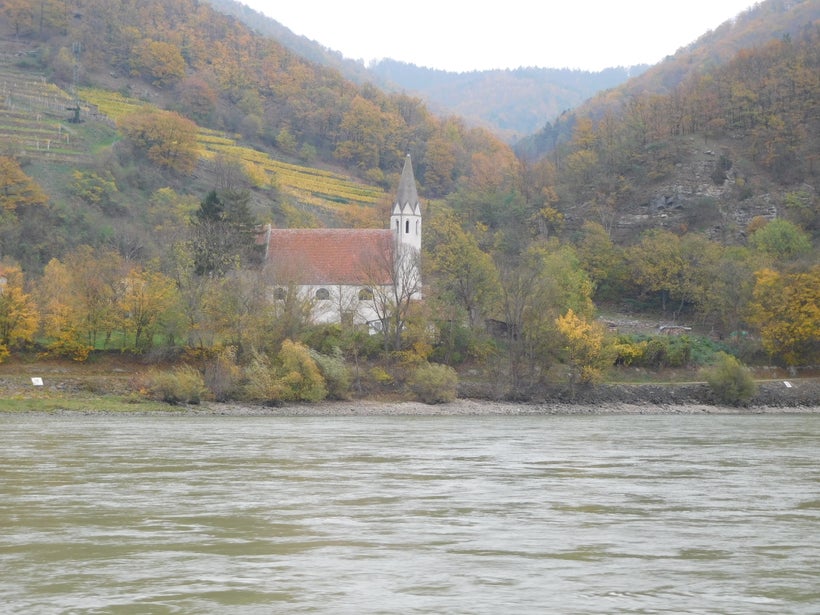
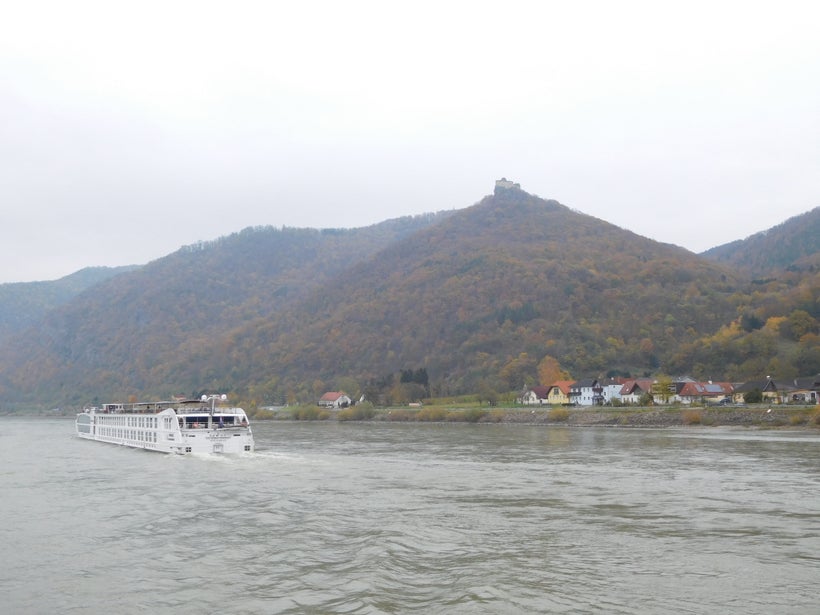
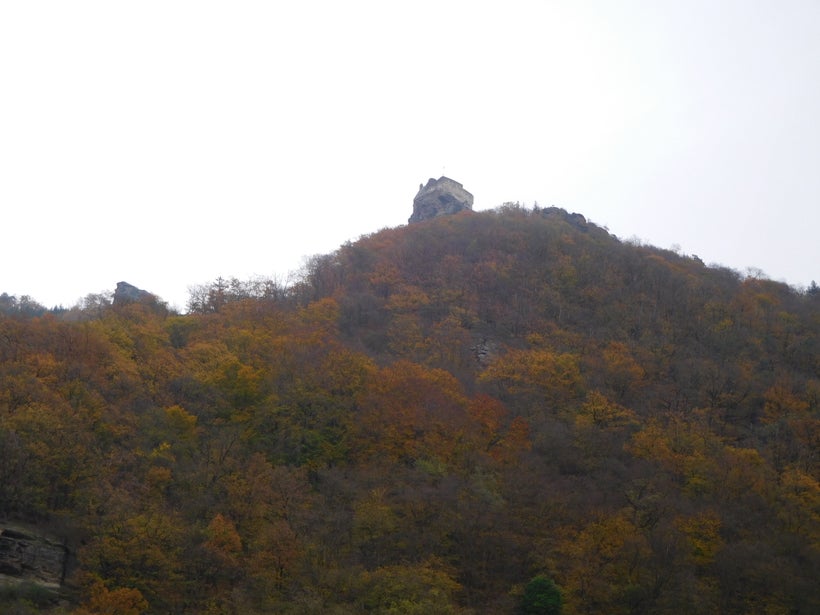
Just after we exit the valley, the massive Baroque Benedictine abbey of Melk looms over a little town, looking more like a monument to Mammon than God. It is indeed impressive, an old abbey dating from the 11th century given a total baroque makeover in the early 18th.
You can wander through its vast golden-cream quadrangles and visit the regal visitors’ wing where Empress Maria Teresa paid several calls, but photos are strictly verboten, as they are in the huge baroque-issimo church with its lofty, richly painted ceilings and ornate gilded altar.
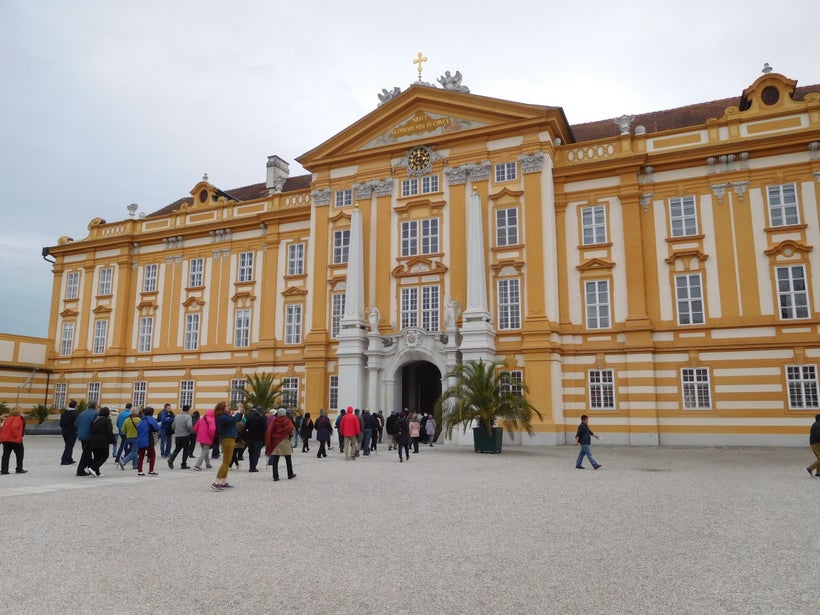
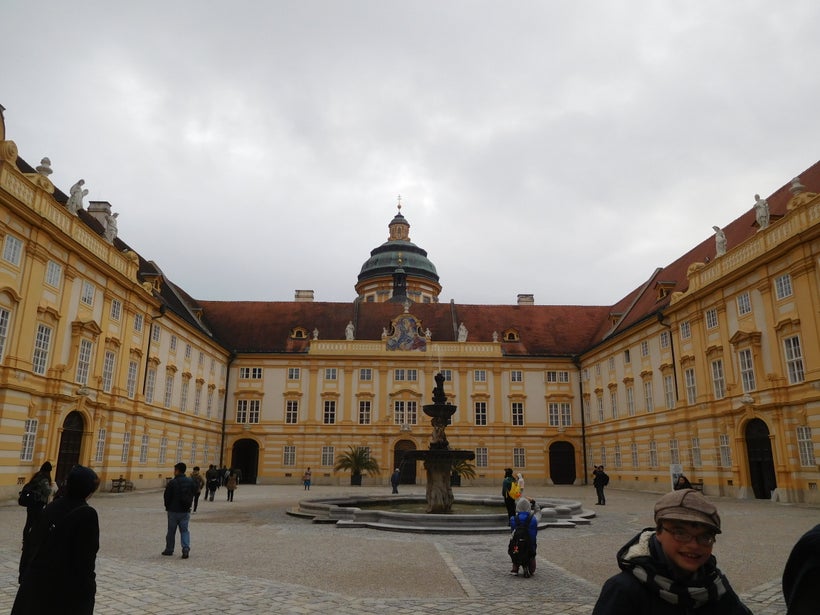
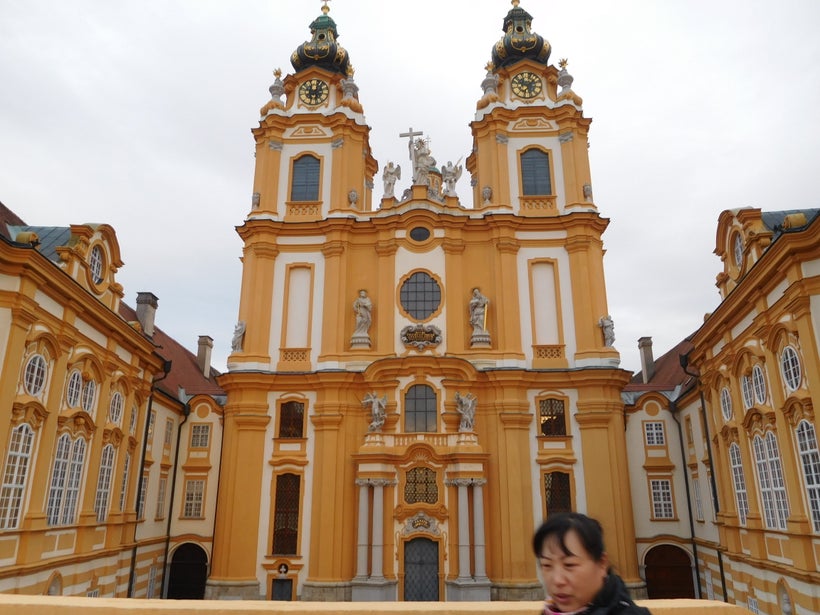
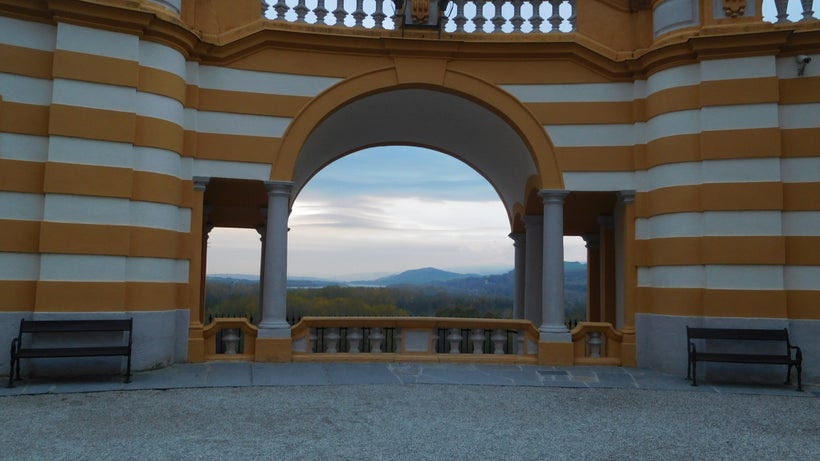
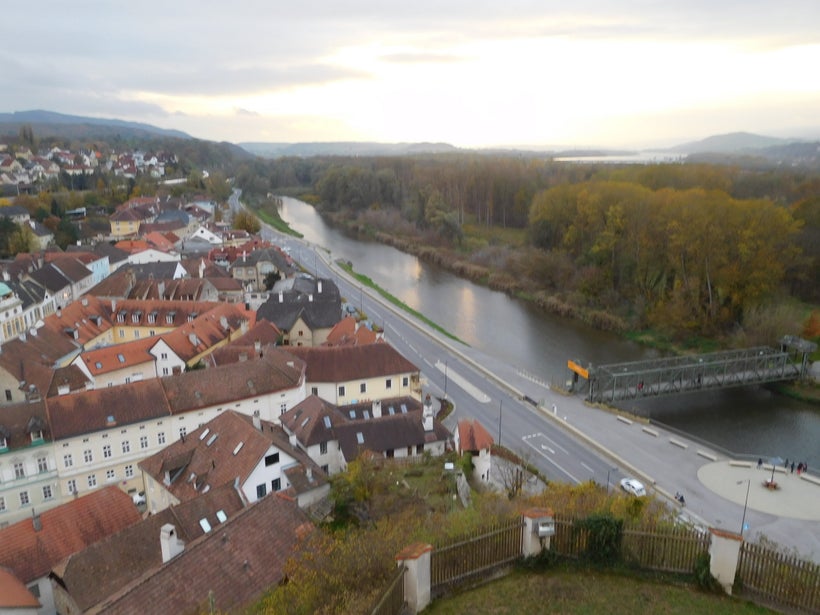
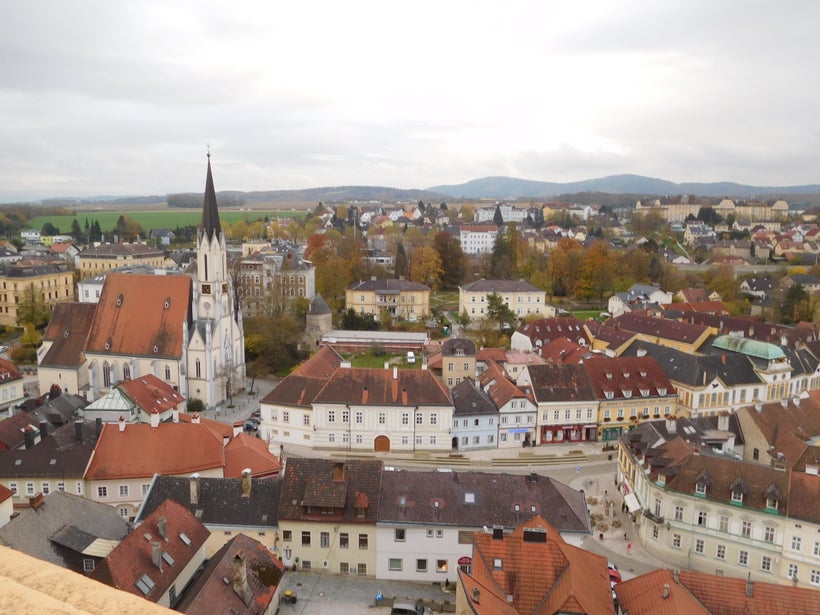
Back on the boat tonight’s entertainment is ‘Majority Rules.’ This involves questions, and the reply chosen most wins. Question 4: name something you can pick. And guess what – nose is the winner. Question 5: what can be used only once. Toilet paper beats out condoms.
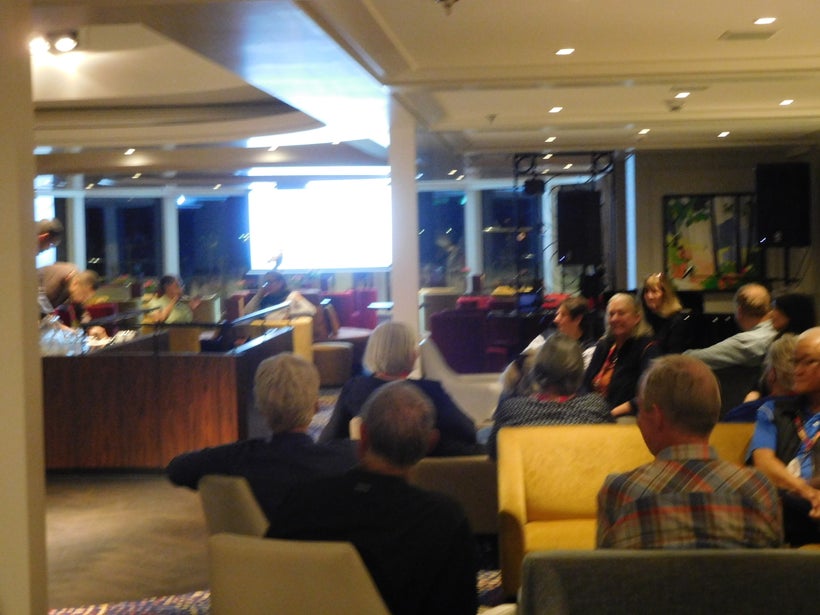

We proceed up the river to ‘Let them eat cake.’
Thus spake Marie Antoinette on being informed that the masses had no bread, according to the legend. The English version doesn’t answer the most important question: what sort of cake?
The French is specific, since she said ‘Qu'ils mangent de la brioche,’ doubtless with a Kraut accent since she was of Austrian birth and presumably said ‘te la prioche.’
Brioche being a luxury bread, let’s go with the English and divine what unspecified cake Her Majesty had in mind. Given she was Austrian, daughter of Empress Maria Theresa and Holy Roman Emperor Francis I before she and hubby Louis XVI lost their heads to the French Revolution, it’s bound to be an Austrian cake.
And what more emblematic of Austrian baking genius than the Linzer Torte – even more so than Vienna’s famed Sacher Torte, that chocolate H-bomb apparently invented in 1832 for Prince Wenzel von Metternich, although a similar recipe dates back to 1718.
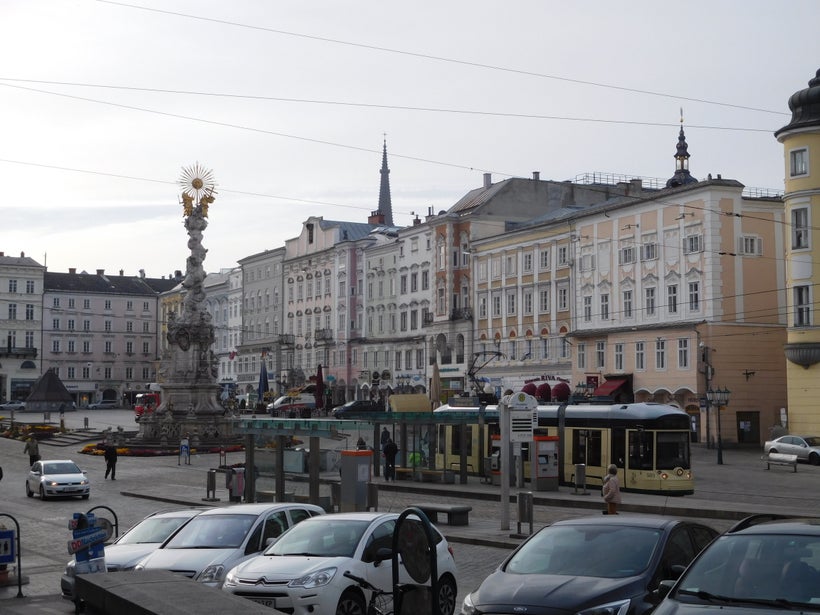
But the great burgh of Linz claims that the recipe for its tart, a crumbly dry-ish confection with redcurrant jam, dates from 1653, making it the world’s oldest known cake recipe. That being so and Yours Truly being Yours Truly, the first thing I do in Linz is NOT eat Linzer Torte.
The torte’s birthplace is a pleasant town, Austria’s third largest with a population of 270,000, on a bend in the Danube – hence its name since the Celts who lived here two millennia ago called it ‘Lentia,’ ‘bend’ in their language, and the Romans followed suit.
Several church spires pierce the skyline, either ancient or restored as it was heavily bombed in WWII.

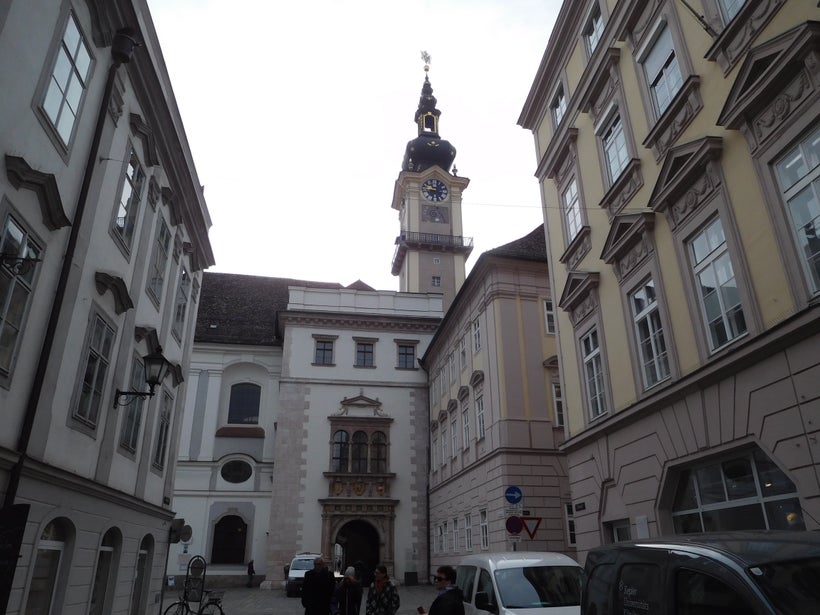
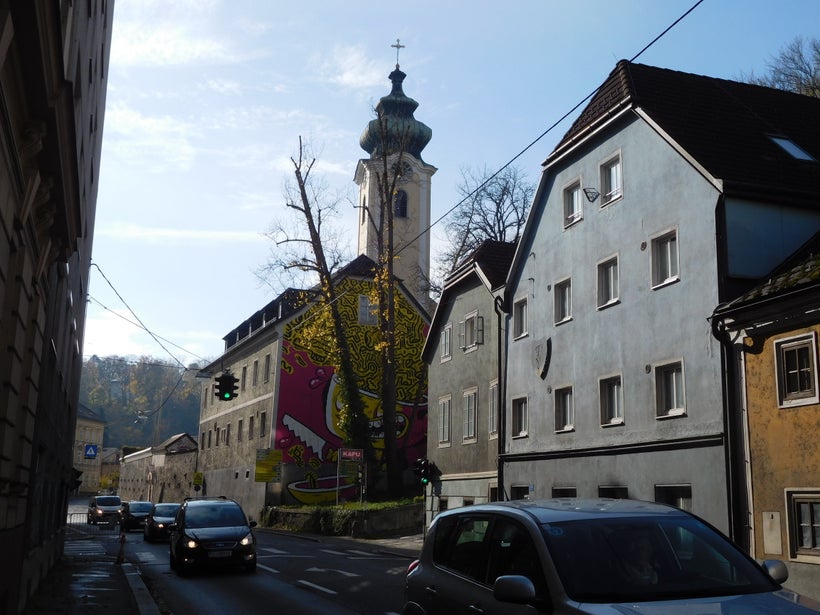
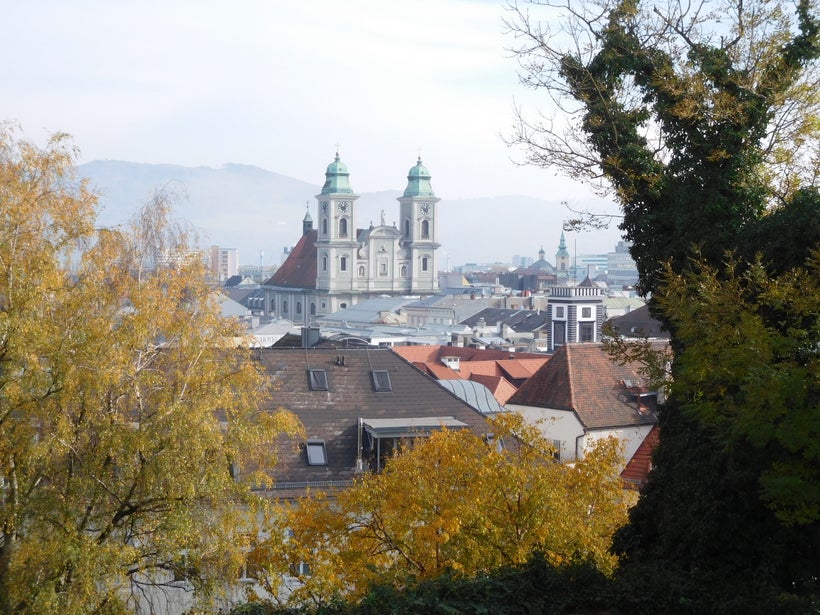
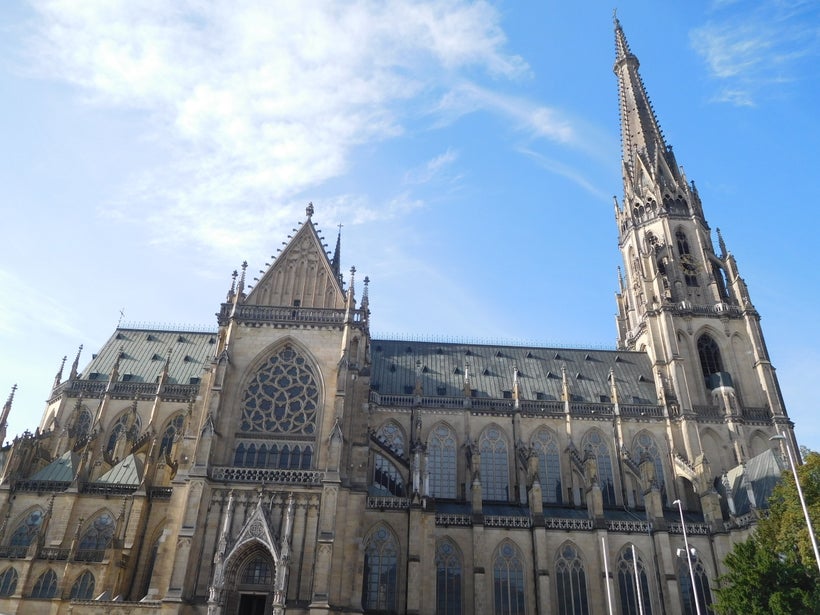
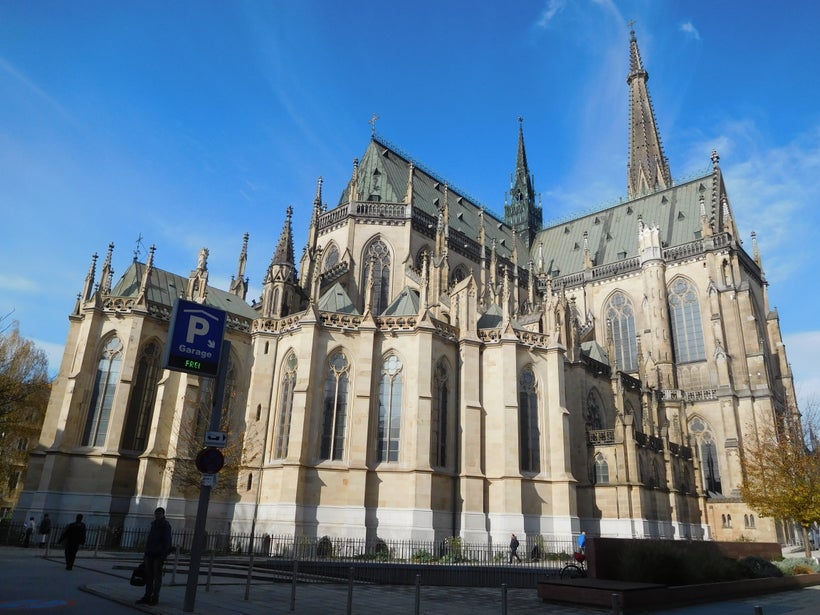
Hitler spent his youth here, considered it his home town although he was born in Braunau, planned to turn it into a masterpiece of Nazi architectural utopia, which never came to pass, and invested in its industrialisation, which did.
It’s still a major steel and chemical production centre. So its dreaming baroque spires – well, pointed, tapered, onion-domed, green upside-down artichoke-domed spires – dream, point, taper, or choke against a backdrop of great pillars of smoke belching out of chimneys.
But thanks to pollution control the pillars are snow-white, not dirty grey-black as they once were, and the city, home to eight universities and a plethora of museums on a slew of subjects, is no longer a doomed, dust-covered steel town.
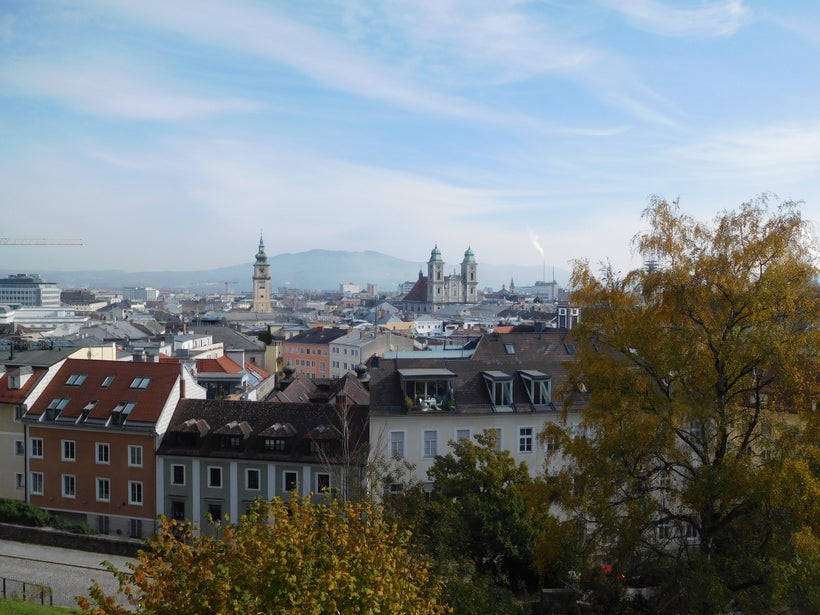
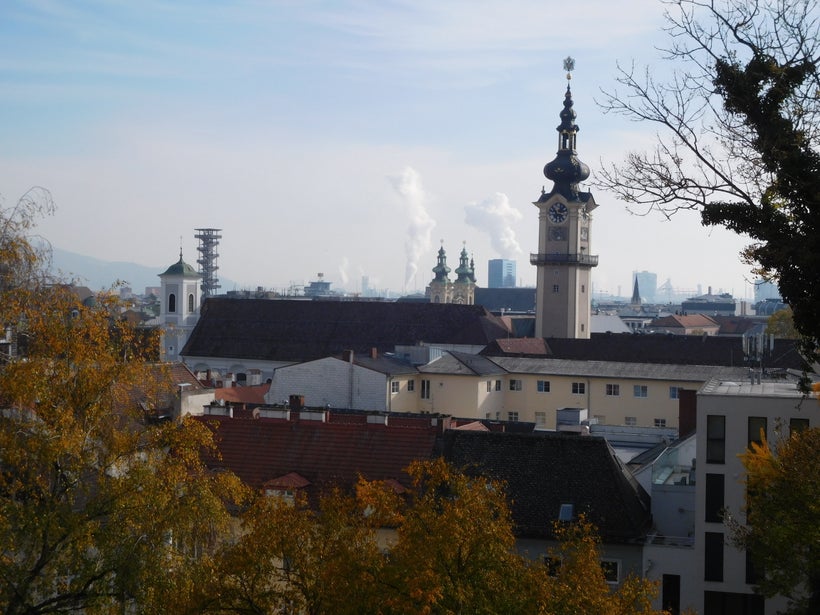
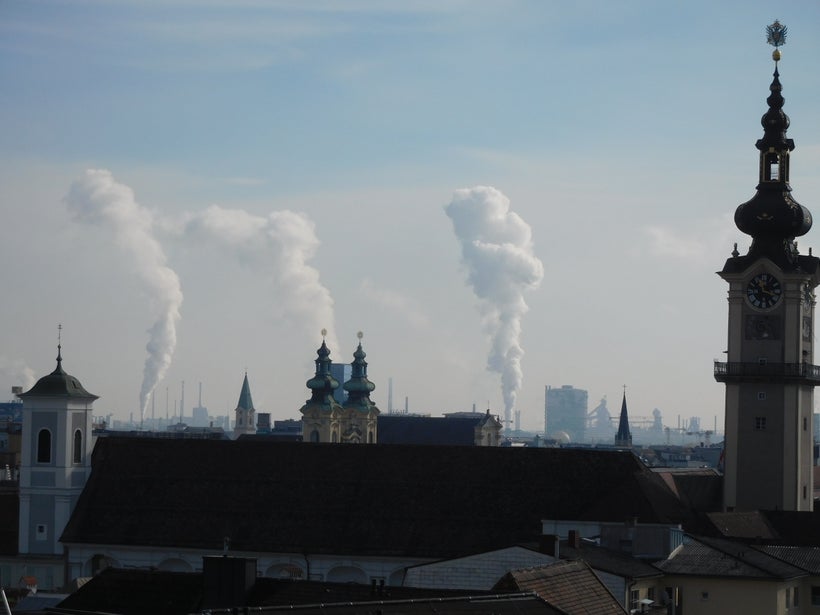
Among the baroque buildings whose origins go back to the Middle Ages, Reformation and Counter-Reformation, ultra-modern glass confections – monstrosities or delights, depending on your penchant – dot the urban landscape.
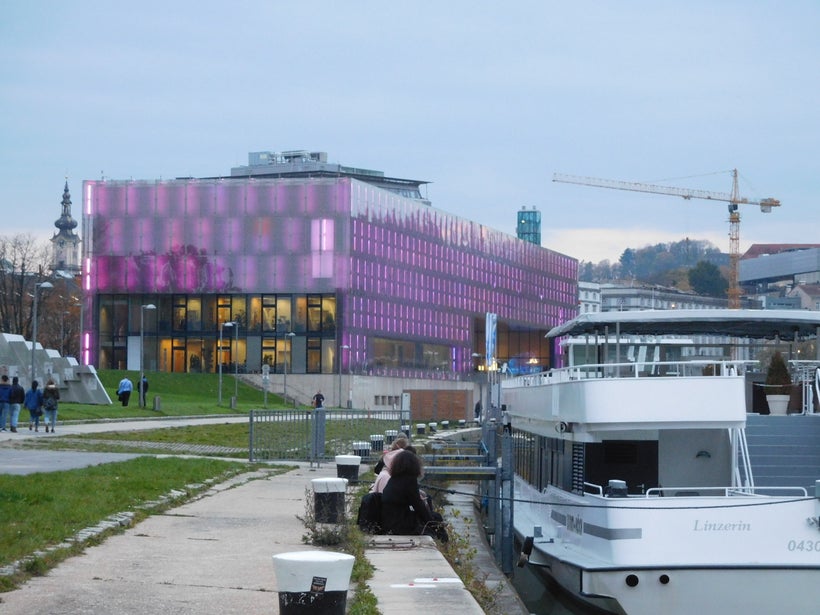
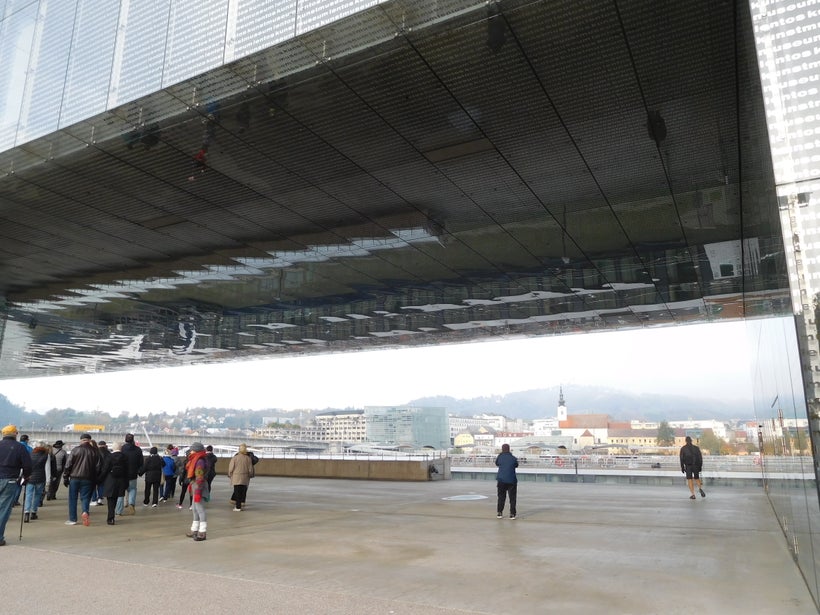
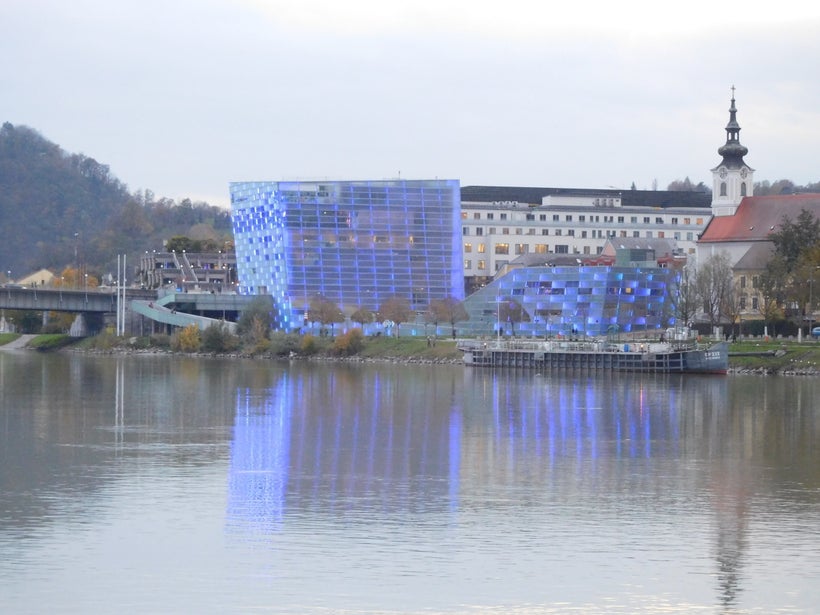
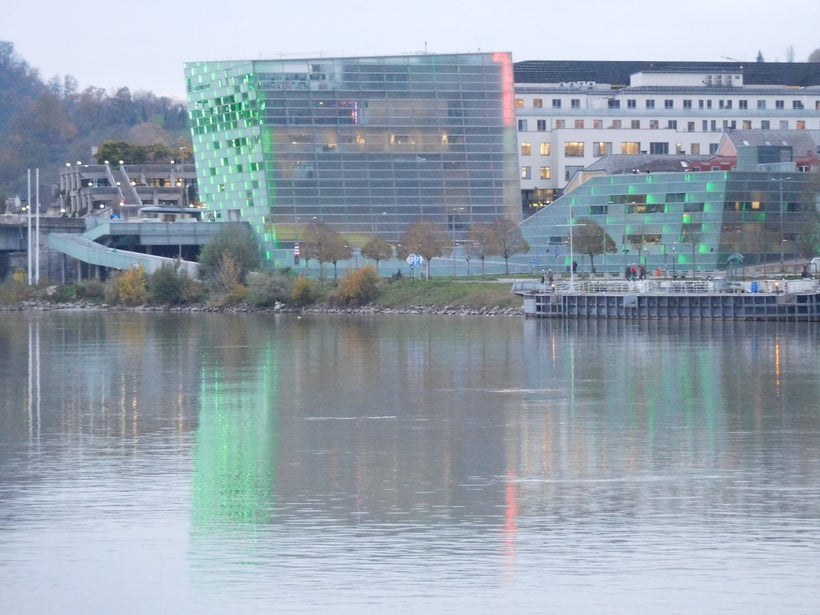
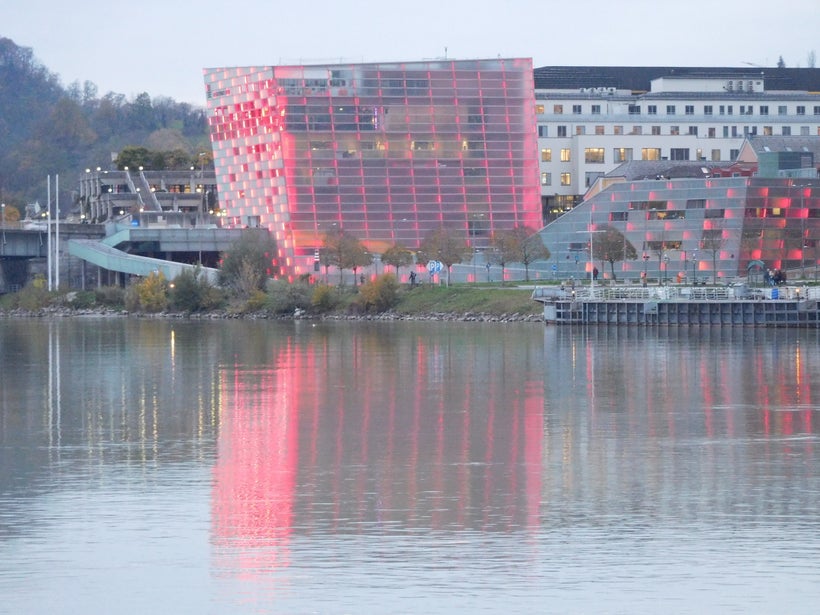
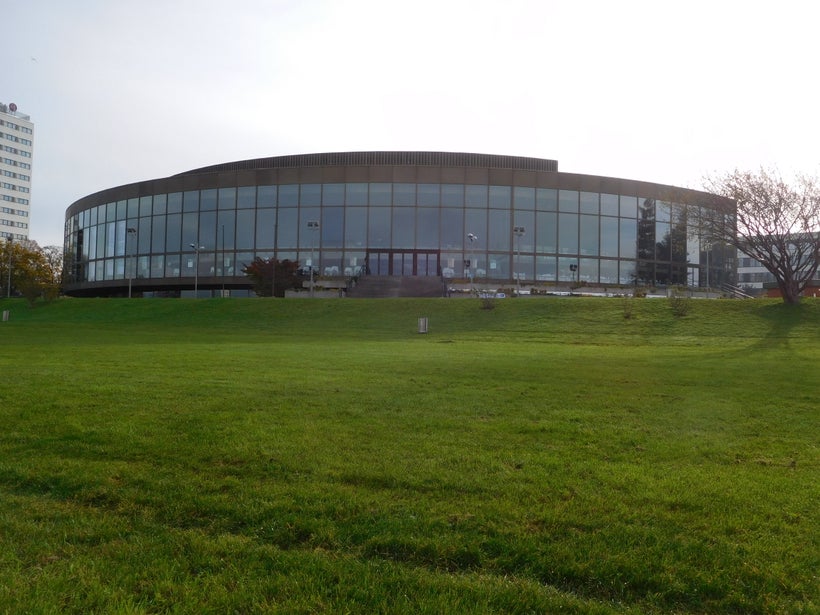
Beyond Hitler, other residents included mathematician Johannes Kepler, composer Anton Bruckner, philosopher Ludwig Wittgenstein, and German Holocaust monstrosity Adolf Eichmann.
To round off the day, tonight’s entertainment is the crew’s own show - hackneyed old sketches performed at an impossibly slow pace. Fortunately, we enter a lock, one of 14 on the 455-mile journey, giving me something else to occupy my drooping mind with.
Again, of course, I’m in a minority of one. The others, fully oiled by ample libations, explode in hysterical laughter. Rivka, meanwhile, has already retired to the cabin with a full glass of wine.
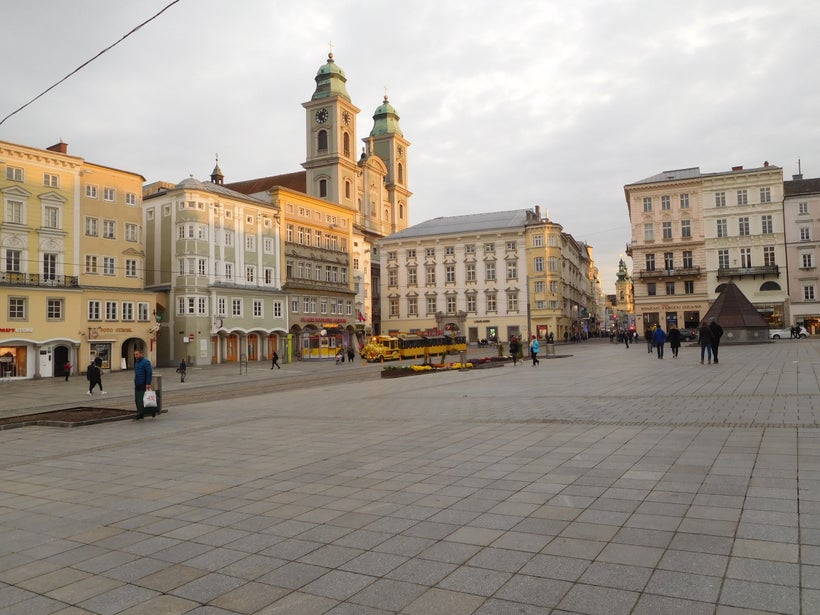
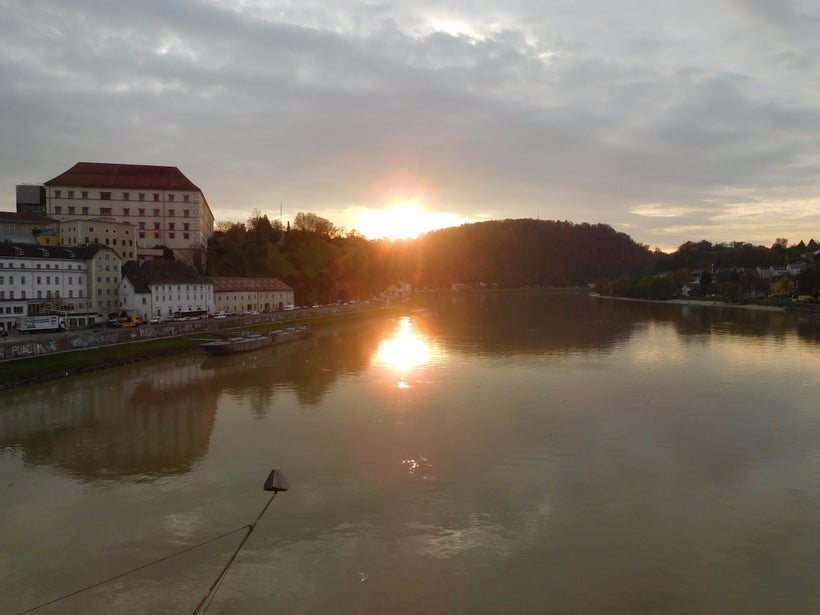
[Upcoming blog: Up the Danube without a paddle - Passau and Regensburg: River boating on the Looney Front]
By the same author: Swimming With Fidel: The Toils Of An Accidental Journalist. Available on Kindle, with free excerpts at https://www.amazon.com/Swimming-Fidel-Toils-Accidental-Journalist-ebook/dp/B00IMNWV2W and in print version on Amazon in the U.S at https://www.amazon.com/Swimming-Fidel-Toils-Accidental-Journalist/dp/1496080319/ref=tmm_pap_swatch_0?_encoding=UTF8&qid=&sr=
And: Bussing The Amazon: On The Road With The Accidental Journalist; available with free excerpts on Kindle and in print version at https://www.amazon.com/Bussing-Amazon-Road-Accidental-Journalist-ebook/dp/B00KNCGD9M
